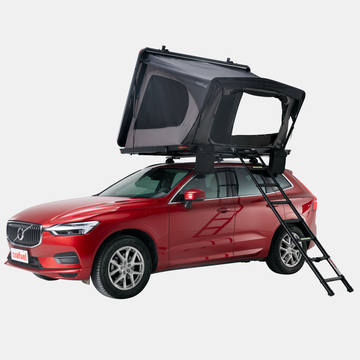
6 Uses of Solar Energy
It's a common sense that our sun is the source of all life on Earth, and solar energy is useful to us in many different ways. The sun creates two main types of energy – light and heat – that we can harness for many activities ranging from photosynthesis in plants to creating electricity with photovoltaic (PV) cells to heating water and food. So, what are some uses of solar energy? Let’s explore six common uses and benefits of sunlight in our daily lives.
1. Solar Electricity
This solar energy application has gained a lot of momentum in recent years. As solar panel costs decline and more people become aware of the financial and environmental benefits of solar energy, solar electricity is becoming increasingly accessible. While it’s still a tiny percentage of the electricity generated in the U.S. (4.4% in 2022), solar electricity is growing rapidly — from January 2022 to April 2022, clean energy accounted for more than 25% of U.S. electricity, besides, solar energy (including rooftop solar energy) increased by 28.9% year-on-year as of April 30, 2022— according to the US Energy Information Administration (EIA).
Technicians usually install a distributed solar photovoltaic (PV) system on the rooftops of homes or businesses. These solar power systems generate electricity to offset the property owner’s usage and send any excess production to the electric grid.
A solar battery can connect to your solar power system to let you use solar after the sun goes down, power an electric vehicle (EV) overnight or provide backup power during emergencies. Some homeowners may choose to go completely off-grid with a solar power and battery system or a solar generator system.
2. Solar Water Heating
Uses for solar energy extend to water heating systems. Most solar water heating solutions create hot water that people use inside the home.
Solar water heaters use a rooftop cell to absorb the sun’s heat and transfer it to the water tank. Solar water heaters usually have a 5- to 10-year payback, according to the U.S. Department of Energy (DOE).
Another solar energy application, especially in the southern and southwestern U.S., is heating swimming pools. The systems circulate water to a collector, where sunlight heats it. The system them pumps the heated water back into the pool.
With costs between $3,000 and $4,000 and a payback of 1.5 to 7 years, the U.S. DOE says that “solar pool heating is the most cost-effective use of solar energy in many climates.”
3. Solar Ventilation
Solar ventilation solutions such as solar attic fans can reduce the burden of your HVAC by helping cool your home during summer. This may be a good option if you can’t install a solar PV system that offsets your home’s entire electricity use. One innovative product is the Solatube solar attic fan.
Commercial and industrial applications of solar process heat include solar ventilation technologies. These technologies can preheat a building’s air in cold climates, which reduces energy costs.
4. Solar Lighting
Solar lights have become commonplace. You can find them everywhere from home landscaping and security lights to road signs and street lights.
These solar lighting technologies are inexpensive and readily available. You can find basic to high-end designs everywhere from your local hardware store to online shopping websites like Amazon.
One innovative use of indoor solar lighting, featured on Mashable, is the Solatube skylight. It adds natural light while reducing energy use.
5. Solar Transportation
Solar-powered vehicles may be the future, with existing applications including buses, trains, airplanes and race cars that students in Australia and the U.S. have built. A fully solar-powered car is even ready for commercial release in 2019. This use of solar energy is not yet widely available, unless you own an electric vehicle (EV) and charge it with solar panels (generally via a solar-connected battery).
6.Portable Solar
In our connected world, phones and tablets are always with us (and, let’s face it, often running low on battery). Portable solar generators can keep our personal electric devices charged on the go.
The technology already exists to integrate solar cells into our phones and has been in watches since the 1970s (see the Citizen Eco-Drive). Researchers in Japan have even developed lightweight, water-resistant solar cells that could someday be sewed into clothing to power devices.
Last Few Words
Well, Crafuel Alto solar generators are perfectly matched your needs if you're ready to find out if solar energy is right for you, get your free personalized solar energy assessment from Crafuel today. You’ve got nothing to lose, but plenty to gain.






